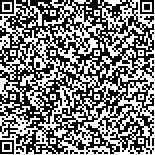下载中心
优秀审稿专家
优秀论文
相关链接
摘要

城市地区地表覆盖分类在城市研究中是一个十分重要的方向。遥感作为获取地物物理属性的一种重要技术手段,已初步应用于分类研究中。然而,随着城镇化的不断推进,城市内部地物类型越来越复杂,单一的遥感影像已无法满足城区地表覆盖分类中高精度的要求。高光谱影像和LiDAR数据能够分别表征地物的光谱信息及高程而被广泛应用。因此,根据两者之间互补的优势,本文提出了基于高光谱影像和LiDAR数据多级融合的城区地表覆盖分类方法。首先对两幅影像分别进行特征提取,将提取到的光谱、空间及高程信息进行层叠实现特征级融合。对得到的特征影像的所有像素点进行分类,然后利用LiDAR点云数据提取的建筑物掩膜,对非建筑物部分进行分类,再次实现特征级融合,以此改善建筑物区域与非建筑物区域的混淆。然后将未使用掩膜得到的分类结果与利用掩膜得到的分类结果进行投票实现决策级融合。最后利用条件随机场模型对分类结果进行后处理操作,达到平滑图像去除噪声点的目的。
Land Use/Land Cover (LU/LC) classification of urban areas is of great significance to urban studies and has become a highly important research direction. However, with continuous urbanization and more types of inner cities diversified, single remote sensing image has been unable to meet the requirements of high precision. Therefore, urban LU/LC classification by data fusion has emerged. In this study, hyperspectral images are widely used in urban LU/LC classification because of their abundant spectral information. However, an objective limitation is that similar spectral characters with different elevation cannot be distinguished. LiDAR data can obtain accurate elevation information. Therefore, such data will obtain better classification maps when merged with hyperspectral images.
This work proposes an urban LU/LC classification method based on the multi-level fusion of hyperspectral imagery and LiDAR data by using the complementary of their advantages. First, the spectral, spatial, and elevation information extracted from two images are stacked to achieve level fusion. Then, the classification is divided into two frameworks. One framework classifies all pixels of the feature images, while the other uses LiDAR data to extract the building mask and classify the off-building area. Classification maps of this framework are obtained by combining the classification map of the latter framework and the off-building area. The classification results are then obtained by voting the classification results obtained by the two frameworks to complete the decision-level fusion. Finally, the conditional random fields are processed to smoothen the image and remove noise.
The data set of 2013 IEEE GRSS data fusion contest was experimented on to verify the effect of the proposed algorithm. The OA was 93.22%, and Kappa was 0.93. The accuracy of the proposed method exceeded 90% in most categories, while the classification accuracy of synthetic grassland, soil, tennis court, and running track was 100%. Experiment results showed that the proposed algorithm greatly improved the classification of buildings, roads, and parking lots.
In this study, hyperspectral imagery and LiDAR data are applied to classify LU/LC in urban areas. It also combines feature level and decision level and achieves good results. The following problems will be considered in future works:increasing the accuracy of building extraction to improve the effect of feature-level fusion, considering the increasing intensity of LiDAR point cloud data in feature-level fusion, and increasing the number and diversity of classifiers when using the multiple classifier classification.

